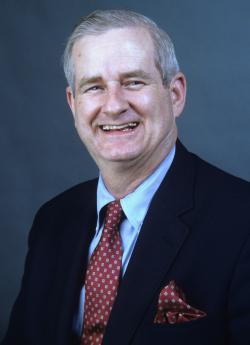Back in the dark ages, before Sunday Ticket and the Red Zone Channel, NFL fans were at the mercy of the television networks. Your Sunday afternoon entertainment depended on whatever game CBS or NBC (and later Fox) decided to broadcast to your local affiliate. All you could do was hope that the folks running those networks made smart decisions when it came to beaming games to the football-worshipping country.
For years, nobody paid much attention to how these programming decisions were made. That changed in 1981, a seminal year in the history of sports broadcasting. That year, Terry O’Neil, a protege of the legendary Roone Arledge, left ABC to lead CBS’ languishing sports division. O’Neil revamped the network’s crusty coverage, moving the main cameras from the 50-yard line to the 35 on either side, introducing the “Telestrator” to network productions (it was then called the “CBS Chalkboard”), and promoting John Madden to the role of No. 1 analyst.
O’Neil also listened when a fellow ABC refugee and football fanatic named Beano Cook, a publicist at the network, burst into his office and declared that the fellows making the NFL’s broadcast map were buffoons. Cook, who died Wednesday at age 81, is well known for his work as a college football broadcaster. But in this meeting with O’Neil, Cook did something that would have a dramatic impact on the pro game.
O’Neil recounts the moment in his memoir, The Game Behind the Game:
“O’Neil, do you have any idea how many millions of dollars these guys have wasted over the years?” Beano said.
“What?”
“The NFL ratings, O’Neil. Do you have any idea how much advertising money they’ve let get away? Forget that. Do you think the stockholders know? Do you think they know about the fucking idiots who’ve been doing their NFL maps?”
For years, the decisions on which games to beam to which affiliates had been made by network vice presidents from the entertainment and affiliate relations divisions. These weren’t men who grasped the nuances of regional rooting interests, or the idea that fans often wanted to watch teams they hated as much as ones they loved. Generally, these fellows just glanced at the standings and dropped in the games accordingly.
Cook changed that. He crashed a map-making meeting in 1980, explaining to the execs that Packers fans also cared about watching the hated Bears. Not the first-place Vikings, not the Giants, not even the Cowboys. The locals wanted to watch the Bears lose almost as much as they wanted to see the Pack win—and vice versa throughout Illinois.
A simple notion today, perhaps, but in those days Beano’s advice was ignored. As he stood at the vice president’s desk, tracing the shores of Lake Michigan with his fingertip, he was told—in O’Neil’s words—to “mind his own business and get the hell out” of the man’s office.
Now O’Neil seized control of the process. Working with Cook, the men broke the country into 23 regions. Some were NFC-controlled terrain, like Detroit and Washington, some AFC strongholds, like the Ohio-Pennsylvania corridor. And there were several “swing” regions, with no natural rooting interest.
Cook and O’Neil began showing Redskins games throughout the South, where they were still considered the neighborhood team despite the presence of the Atlanta Falcons, who began play in 1966. They also gave more airtime to the newly high-flying San Francisco 49ers, boosted in 1981 by Bill Walsh and Joe Montana.
When they didn’t know what game to show a neutral region, Cook and O’Neil called local sportswriters, television personalities, and sometimes random fans to get a sense of what the local populace was thinking. Often, there was a simple solution. “The two most important people to CBS are J.R. Ewing and Tom Landry,” Cook said in 1981. “We have a rule we go by when planning NFL telecasts. Give people the best game possible, and when in doubt, give them the Cowboys.” America’s Team was always a good option, but until that point fans in Washington, D.C., who then as now rooted against the Cowboys, were unlikely to get Dallas as a doubleheader game or a replacement telecast if the Skins were off the air.
CBS’ NFL ratings, buoyed by exciting teams in D.C., San Francisco, New York, and Dallas, exploded in 1981. The regular-season telecasts averaged a then unheard-of 17.5 rating, and the network’s NFL profits increased from $28.4 million to $48.7 million, according to O’Neil.
More than anything else, the league’s ever-increasing windfalls have accompanied the game’s rise as a fantastic television product. And for that, the NFL and the networks should thank Beano Cook. His time in the pro game was short—Cook left CBS the next year when it declined to give him an on-air gig. Soon after, he became everyone’s favorite crusty, Notre Dame-loving uncle at ESPN. But in all the decades he yakked about the college game, he’d never have as big an effect as he did on the NFL in 1981.
